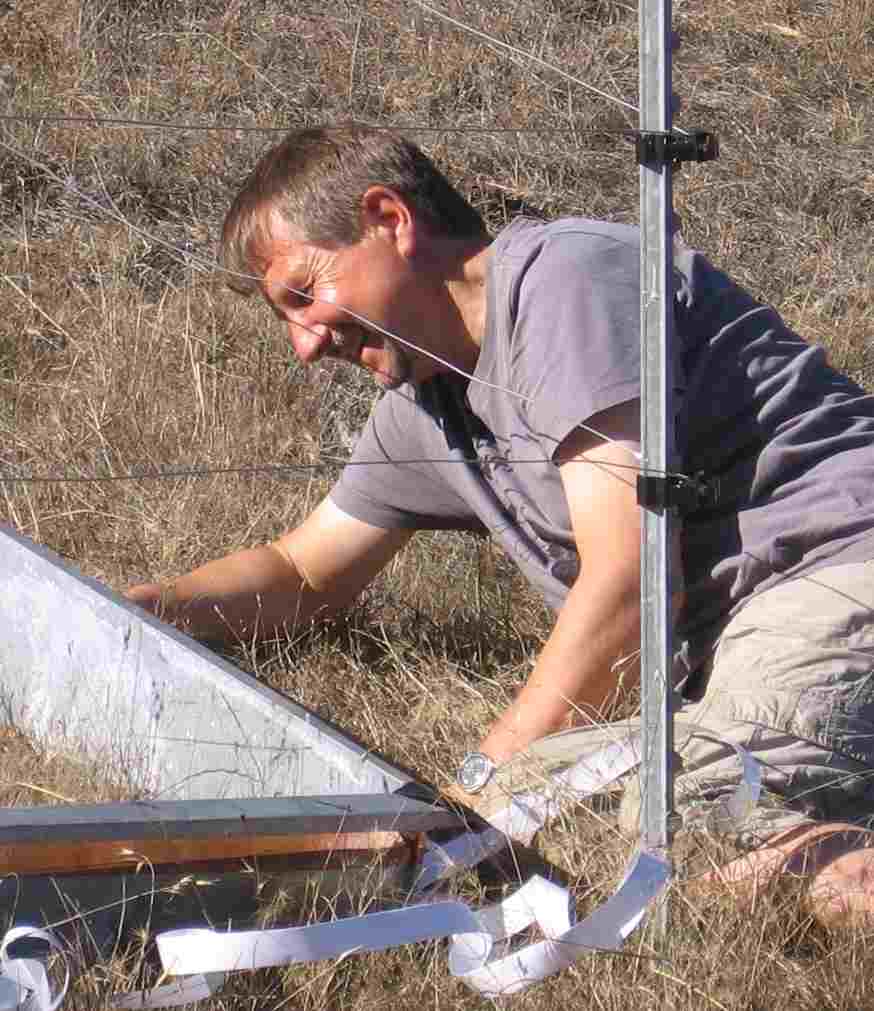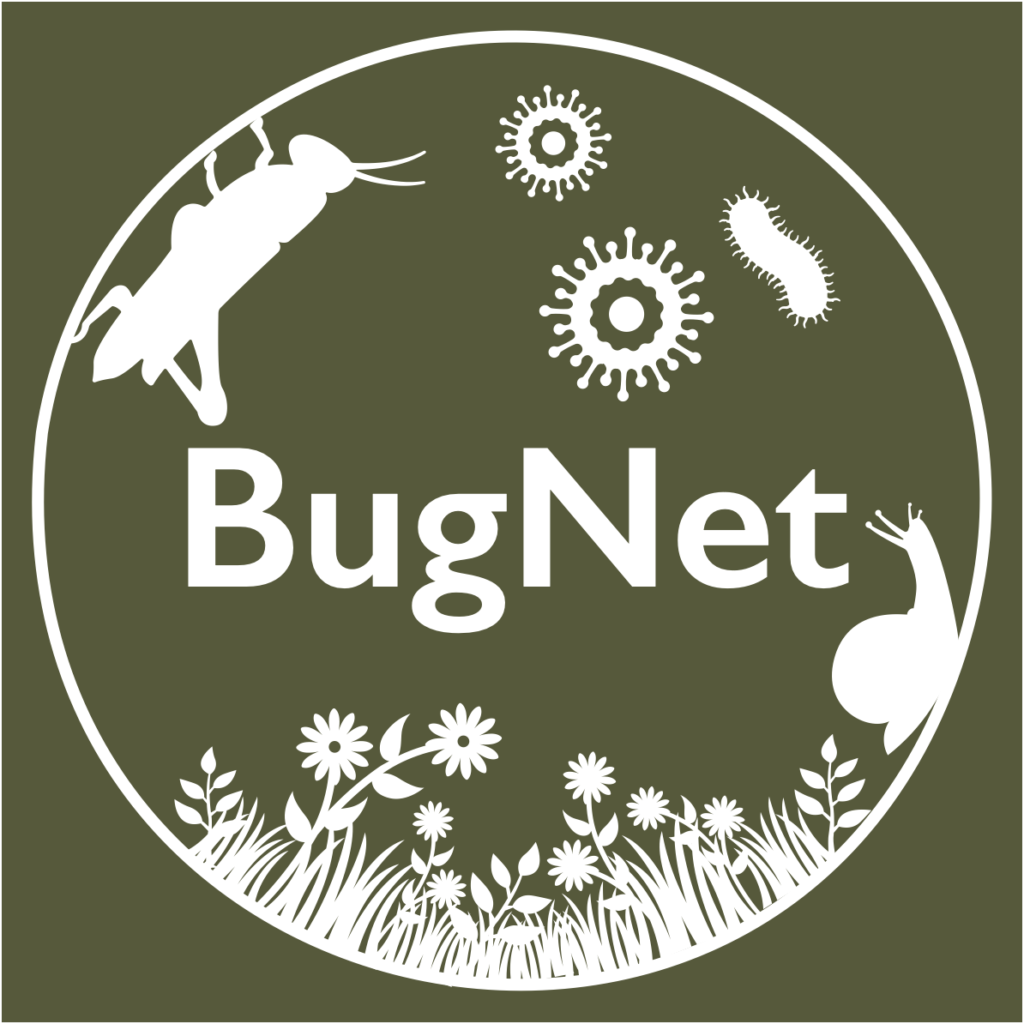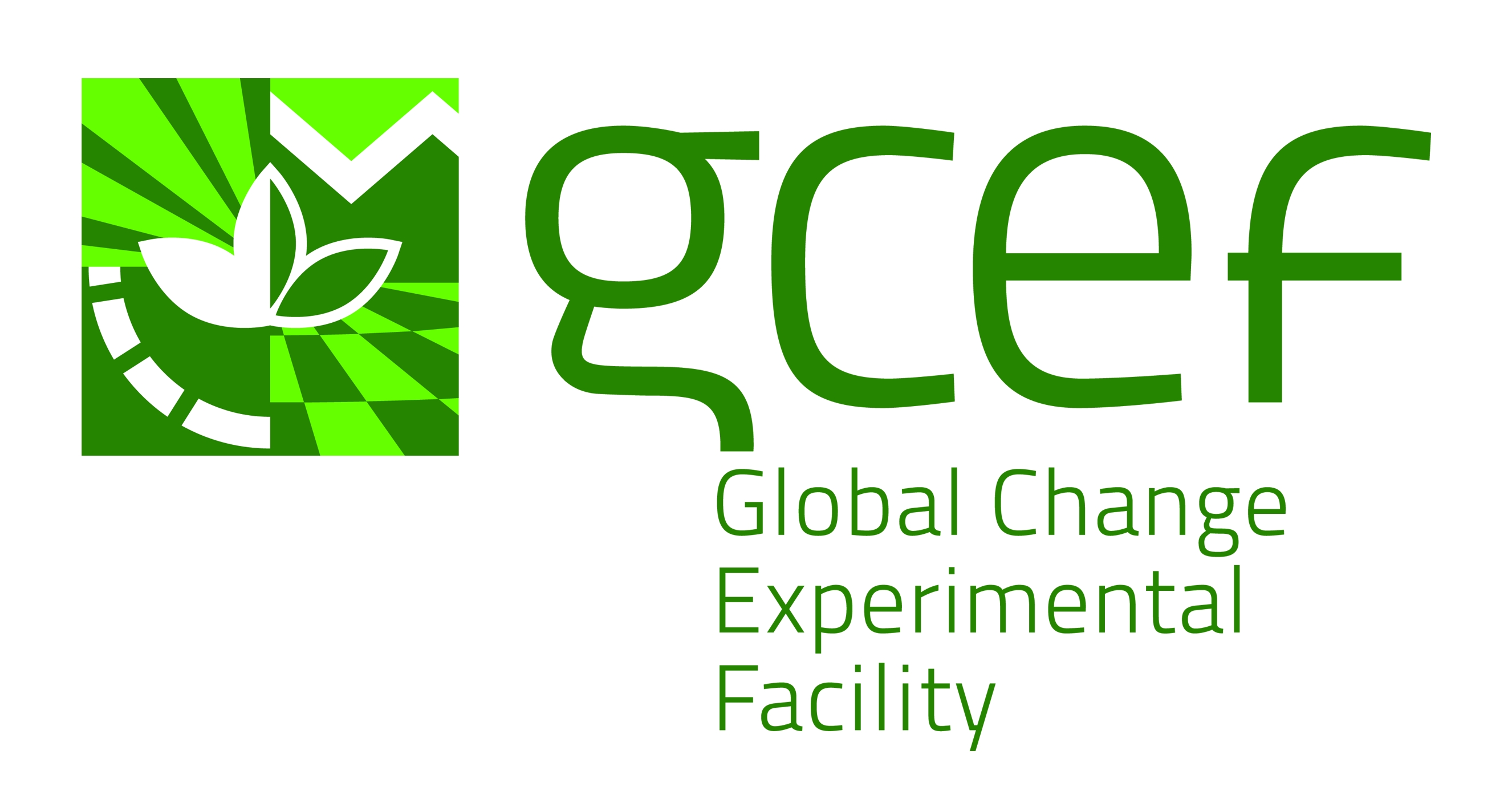Dr. Harald Auge
Kontakt
Dr. Harald Auge
Gastwissenschaftler
(ehemaliger Leiter der Arbeitsgruppe
Experimentelle Ökologie von Populationen und Artengemeinschaften)
Department Biozönoseforschung
Helmholtz-Zentrum für
Umweltforschung - UFZ
Theodor-Lieser-Straße 4
06120 Halle (Saale)
harald.auge@ufz.de
 orcid.org/0000-0001-7432-8453
orcid.org/0000-0001-7432-8453

Forschungsschwerpunkte
Ich arbeite auf den Gebieten der Populationsbiologie und der Vegetationsökologie und nutze Experimente, um zu erforschen, welche Rolle die Wechselwirkungen zwischen Arten für die Reaktion von Ökosystemen auf verschiedene Triebkräfte des globalen Wandels (Klimawandel, Landnutzung, biologische Invasionen) spielen.
- Der Einfluss des Klimawandels und der Landnutzung auf Arten-Interaktionen und Ökosystemprozesse
- Bedeutung antagonistischer Interaktionen für die Koexistenz von Pflanzenarten, Pflanzen-Invasionen und das Funktionieren von Ökosystemen
- Die Vernüpfung zwischen ober- und unterirdischen Prozessen: der Einfluss von Baum- und Streudiversität auf Ökosystemfunktionen
Curriculum vitae
1980 - 1985
Biologiestudium, Martin-Luther-Universität Halle-Wittenberg
1986
Abschluss als Diplom-Biologe
1984 - 1987
Forschungsstipendium, Institut für Geobotanik, Martin-Luther-Universität Halle-Wittenberg
1987 - 1991
Wissenschaftlicher Assistent, Institut für Geobotanik, Martin-Luther-Universität Halle-Wittenberg
1991
Dr. rer. nat., Mathematisch-Naturwissenschaftliche Fakultät, Martin-Luther-Universität Halle-Wittenberg:
"Experimentelle Populationsökologie von Galium aparine L. (Rubiaceae) - Ökotypendifferenzierung und phänotypische Plastizität", Betreuer: Prof. Dr. E.-G. Mahn
1991
Projektkoordinator, Institut für Geographie und Geoökologie, Akademie der Wissenschaften, Leipzig
1992
Projektkoordinator, UFZ Umweltforschungszentrum Leipzig-Halle
1993 - 1997
Wissenschaftlicher Mitarbeiter, Sektion Biozönoseforschung, UFZ Umweltforschungszentrum Leipzig-Halle
1997 - 2025
Leiter der Arbeitsgruppe "Populationsbiologie der Pflanzen" (seit 2021: "Experimentelle Ökologie von Populationen und Lebensgemeinschaften") & stellvertretender Leiter des Departments Biozönoseforschung, Helmholtz-Zentrum für Umweltforschung - UFZ, Halle
Mitarbeit in Herausgeber-Gremien und Beiräten
- Mitglied des Beirats von BugNet (seit 2021)
- Mitglied des Editorial Board von Basic and Applied Ecology (2004-2018)
- Associate Editor von Neobiota (2011-2025)
- Mitglied des Editorial Board von Flora - Morphology, Distribution, Functional Ecology of Plants (2013-2025)
- Mitglied des Editorial Board von PLoS ONE (2012-2025)
Veröffentlichungen der letzten 5 Jahre
Worthy SJ, Luong JC, Wainwright BE, Barcu AC, Elwood EC, Gujral AK, International Drought Experiment Consortium, Phillips RP, Funk JL (2025) Growth form and lifespan mediate the role of traits in short-term drought response: A global study of herbaceous species. Nature Ecology & Evolution: accepted.
Ohlert T, Smith MD, …, Auge H, ..., Zuo X (2025) Drought intensity and duration interact to magnify losses in primary productivity. Science 390: 284-289. https://www.science.org/doi/10.1126/science.ads8144
Barry K, Hennecke J, Weigelt A, Bergmann J, Bruelheide H, Freschet G, Iversen C, Kuyper T, Laughlin D, McCormack ML, Roumet C, van der Plas F, van Ruijven J, Wijsmuller R, Auge H, Eisenhauer N, Alexander J, Nock C, Oelmann Y, Wilcke W, Mommer L (2025) Rooting for function: Community-level fine-root traits relate to many ecosystem functions. New Phytologist 248: 3221–3239. https://doi.org/10.1111/nph.70606
Kempel A, Adamidis GC, Anadón JD, Atkinson J, Auge H, Avtzis D, Bachelot B, Bashirzadeh M, Bota J, Classen AT, Constantinou I, Crawley M, de Bellis T, Dostal P, Ebeling A, Eisenhauer N, Eldridge D, Encina G, Estrada C, Everingham S, Fanin N, Feng Y, Gaspar M, Gooriah L, Graff P, Gusmán Montalván E, Gusmán Montalván P, Hartke TR, Huang L, Jochum M, Kaljund K, Karmiris I, Koorem K, Korell L, Laine A-L, le Provost G, Lessard J-P, Liu M, Liu X, Liu Y, Llancabure J, Loïez S, Loydi A, Marrero HJ, McMahan S, Montoya A, Münzbergová Z, Niu Y, Ott D, Oyarzabal M, Panitsa M, Papatheodorou E, Piper FI, Püssa K, Rand K, Saiz H, Sanders NJ, Schädler M, Scherber C, Semchenko M, Sepp S-K, Shah MA, Shaheen I, Stein C, Stewart J, Tang Z, Tschan G, van Nouhuys S, Vandegehuchte ML, Vernon M, Sonali VR, Jianyong Wang J, Xiao Y, Xystrakis F, Yang J, Yang S, Zografou K, Allan E (2025) The Bug-Network (BugNet): a global experimental network testing the effects of invertebrate herbivores and fungal pathogens on plant communities and ecosystem function in open ecosystems. Ecology and Evolution 15: e72111. https://doi.org/10.1002/ece3.72111
Jensen J, Blondeel H, Guillemot J, Schnabel F, Serrano-León H, Auge H, Baeten L, Barsoum N, Bauhus J, Baum C, Bermudez R, Beyer F, Brancalion P, Cavender-Bares J, Eisenhauer N, Felton A, Ferlian O, Fiedler S, Gebauer T, Godbold D, Hajek P, Hall J, Hölscher D, Jactel H, Kreft H, Lapadat C, MacLaren C, Martin N, Meredieu C, Mereu S, Messier C, Montgomery R, Muys B, Nock C, Parker J, Parker B, Paterno G, Perring M, Ponette Q, Potvin C, Reich PB, Rentch J, Rewald B, Robin A, Sandén H, Scherer-Lorenzen M, Sinacore K, Standish R, Stefanski A, Verheyen Kris, Williams L, Weih M (2025) Diversity in resource use strategies promotes productivity in young planted tree species mixtures. Global Change Biology 31: e70493. https://doi.org/10.1111/gcb.70493
Callaway R, Pal R, Schaar A, Hooper D, Auge H, Hensen I, Kožić K, Lekberg Y, Nagy D, Selke J, Thoma A, Träger S, Rosche C (2025) Exotic invasive plant species increase primary productivity, but not in their native ranges. Ecology Letters 28: e70187. https://doi.org/10.1111/ele.70187
Bönisch E, Eisenhauer N, Bassi L, Auge H, Friedlein H, Gleixner G, Weller L-F, Guerrero-Ramírez NR, Reitz T, Richter R, Schädler M, Hines J (2025) Resource inequality limits transfer of nutrients from soils to plants in experimental grassland. Oikos 2025: e11103. https://doi.org/10.1002/oik.11103
Zheng L, Ibáñez I, Williams L, Zhu K, Serrano-León H, Jensen J, Eisenhauer N, Verheyen K, Scherer-Lorenzen M, Schnabel F, Wirth C, Kreft H, Guerrero-Ramírez NR, Hölscher D, Irawan B, Paterno GP, Sundawati L, Ponette Q, Messier C, Paquette A, Stefanski A, Mereu S, Bauhus J, Gebauer T, Hajek T, Nock C, Cavender-Bares J, Parker WC, Quosh J, Ferlian O, Auge H, Potvin C, Yan E, Yang B, Zhang L, Zhao Z, Sinacore K, Hall J, Guillemot J, Robin A, Brancalion P, Reich PB (2025) Neighborhood diversity increases tree growth more in wetter climates but not in wetter years. Nature Ecology & Evolution 9: 1812-1824. https://doi.org/10.1038/s41559-025-02805-5
Bondaruk V, Xu C, Wilfahrt P, Yahdjian L, Yu Q, Borer ET, Jentsch A, Seabloom EW, Smith MD, Alberti J, Oñatibia GR, Dieguez H, Carbognani M, Kübert A, Power SA, Eisenhauer N, Isbell F, Auge H, Chandregowda MH, Churchill AC, Daleo P, Forte T, Greenville A, Koerner SE, Ohlert T, Peri P, Petraglia A, Salesa D, Tedder M, Valdecantos A, Verhoeven E, Wardle GM, Werner C, Wheeler GR, An H, Biancari L, Diao HJ, Gutknecht J, Han L, Ke YG, Liu JL, Maziko Y, Tian DS, Tissue D, Wanke S, Wei CZ, Wilkins K, Wu HH, Young AL, Zhang FW, Zhang B, Zhu JT, Zong N, Zuo XA, Hautier Y (2025) Aridity modulates biomass changes following nutrient addition and extreme drought on globally distributed grasslands. Nature Ecology and Evolution 9: 937-946. https://doi.org/10.1038/s41559-025-02705-8
Augusto L, Borelle R, Boča A, Bon L, Orazio C, Arias-González A, Bakker MR, Gartzia-Bengoetxea N, Auge H, Bernier F, Cantero A, Cavender-Bares J, Correia AH, De Schrijver A, Diez-Casero JJ, Eisenhauer N, Fotelli MN, Gâteblé G, Godbold DL, Gomes-Caetano-Ferreira M, Gundale MJ, Jactel H, Koricheva J, Larsson M, Laudicina VA, Legout A, Martín-García J, Mason WL, Meredieu C, Mereu S, Montgomery RA, Musch B, Muys B, Paillassa E, Paquette A, Parker JD, Parker WC, Ponette Q, Reynolds C, Rozados-Lorenzo MJ, Ruiz-Peinado R, Santesteban-Insausti X, Scherer-Lorenzen M, Silva-Pando FJ, Smolander A, Spyroglou G, Teixeira-Barcelos EB, Vanguelova EI, Verheyen K, Vesterdal L, Charru M (2025) Widespread slow growth of acquisitive tree species. Nature 640: 395-401. https://doi.org/10.1038/s41586-025-08692-x
Dieskau J, Hensen I, Eisenhauer N, Durka W, Lachmuth S, Auge H (2025) Plant-soil feedback in European grasslands is phylogenetically independent but affected by plant origin. Journal of Plant Ecology 18: rtaf021. https://doi.org/10.1093/jpe/rtaf021
Korell L, Andrzejak M, Berger S, Durka W, Haider S, Hensen I, Herion Y, Höfner J, Kindermann L, Knight TM, Klotz S, Linstädter A, Madaj A-M, Merbach I, Michalski S, Plos C, Roscher C, Schädler M, Welk E, Auge H (2024) Land use modulates resistance of grasslands against future climate and inter-annual climate variability in a large field experiment. Global Change Biology 30: e17418. https://doi.org/10.1111/gcb.17418
Dieskau J, Hensen I, Eisenhauer N, Gaberle I, Durka W, Lachmuth S, Auge H (2024) Phylogenetic relationships and plant life stage but not biogeographic history mediate priority effects of European grassland plants. Journal of Ecology 112: 2007–2017. https://doi.org/10.1111/1365-2745.14373
Scherzinger F, Schädler M, Reitz T, Yin R, Auge H, Merbach I, Roscher C, Harpole S, Blagodatskaya E, Siebert J, Ciobanu M, Marder F, Eisenhauer N, Quaas M (2024) Sustainable land management enhances ecological and economic multifunctionality under ambient and future climate. Nature Communications 15: 4930. https://doi.org/10.1038/s41467-024-48830-z
Komatsu KJ, Avolio ML, Padullés Cubino J, Schrodt F, Auge H, Cavender-Bares J, Clark AT, Flores-Moreno H, Grman E, Harpole WS, Kattge J, Kimmel K, Koerner SE, Korell L, Langley JA, Münkemüller T, Ohlert T, Onstein RE, Roscher C, Soudzilovskaia NA, Taylor BN, Tedersoo L, Terry RS, Wilcox K (2024) CoRRE Trait Data: A dataset of 17 categorical and continuous traits for 4079 grassland species worldwide. Scientific Data 11: 795. https://doi.org/10.1038/s41597-024-03637-x
Plos C, Hensen I, Korell L, Auge H, Römermann C (2024) Plant species phenology differs between climate and land-use scenarios and relates to plant functional traits. Ecology and Evolution 14: e11441. https://doi.org/10.1002/ece3.11441
Shovon TA, Auge H, Haase J, Nock CA (2024) Positive effects of species diversity on productivity switch to negative after severe drought mortality in a temperate forest experiment. Global Change Biology 30: e17252. https://doi.org/10.1111/gcb.17252
Smith MD, Wilkins K, ... , Auge H, ... , Zuo X (2024) Extreme drought impacts have been underestimated in grasslands and shrublands globally. Proceedings of the National Academy of Sciences 121: e2309881120. https://doi.org/10.1073/pnas.2309881120
Zheng L, Barry K, Guerrero-Ramírez NR, Craven D, Reich PB, Verheyen K, Scherer-Lorenzen M, Eisenhauer N, Auge H, Barsoum N, Bauhus J, Binkley D, Bruelheide H, Cavender-Bares J, Dolezal J, Zhao Z, Fagundes M, Ferlian O, Fiedler S, Forrester D, Ganade G, Gebauer T, Haase J, Hajek P, Hector A, Hérault B, Hölscher D, Hulvey K, Irawan B, Jactel H, Koricheva J, Kreft H, Lanta V, Leps J, Mereu S, Messier C, Montagnini F, Mörsdorf M, Müller S, Muys B, Nock CA, Paquette A, Parker W, Parker J, Parrotta J, Paterno G, Perring M, Piotto D, Polley H, Ponette Q, Potvin C, Quosh J, Rewald B, van Ruijven J, Standish R, Stefanski A, Sundawati L, Tilman D, Urgoiti J, Williams L, Wilsey B, Yang B, Zhang L, Godbold D, Sandén H, Ebeling A, Schmid B, Fischer M, Hautier Y (2024) Effects of plant diversity on productivity strengthen over time due to trait-dependent shifts in species overyielding. Nature Communications 15: 2078. https://doi.org/10.1038/s41467-024-46355-z
Blondeel H, Guillemot J, Martin N, Druel A, Bilodeau-Gauthier S; Bauhus J, Grossiord C, Hector A, Jactel H, Jensen J, Messier C, Muys B, Serrano-León H, Auge H, Barsoum N, Birhane E, Bruelheide H, Cavender-Bares J, Chu C, Cumming J, Damtew A, Eisenhauer N, Ferlian O, Fiedler S, Ganade G, Godbold D, Gravel D, Hall J, Holscher D, Hulvey K, Koricheva J, Kreft H, Lapadat C, Liang J, Liu X, Meredieu C, Mereu S, Montgomery R, Morillas L, Nock C, Paquette A, Parker J, Parker W, Brant Paterno G, Perring M, Ponette Q, Potvin C, Reich P, Rentch J, Rewald B, Sandén H, Sinacore K, Standish R, Stefanski A, Tobin P, van Breugel IM, Fagundes M, Weih M, Williams L, Zhou M, Scherer-Lorenzen M, Verheyen K, Baeten L (2024) Tree diversity reduces variability in sapling survival under drought. Journal of Ecology 112: 1164-1180. https://doi.org/10.1111/1365-2745.14294
Depauw L, De Lombaerde E, Dhiedt E, Blondeel H, Barsoum N, Bauhus J, Damtew A, Eisenhauer N, Fagundes MV, Ganade G, Godbold D, Guillemot J, Hajek P, Hector A, Hérault B, Jactel H, Koricheva J, Kreft H, Mereu S, Messier C, Muys B, Paquette A, Parker WC, Patterno GB, Perring MP, Ponette Q, Potvin C, Reich P, Rewald B, Scherer-Lorenzen M, Schnabel F, Sousa-Silva R, Weih M, Zemp DC, Auge H, Gravel D, Chu C, Liu X, Verheyen K, Baeten L (2024) Enhancing tree performance through species mixing: review of a quarter-century TreeDivNet experiments revealing research gaps and practical insights. Current Forestry Reports 10: 1-20. https://doi.org/10.1007/s40725-023-00208-y
Proß T, Haider S, Auge H, Bruelheide H (2024) Leaf trait variation within individuals mediates the relationship between tree species richness and productivity. Oikos 2024: e10255. https://doi.org/10.1111/oik.10255
Jessen M-T, Auge H, Harpole WS, Eskelinen A (2023) Litter accumulation, but not light limitation drives plant recruitment under nutrient enrichment and grazing. Journal of Ecology 111:1174-1187. https://doi.org/10.1111/1365-2745.14099
Gottschall F, Cesarz S, Auge H, Kovach K, Nock C, Eisenhauer N (2023) Tree community composition stabilizes ecosystem functions in response to drought. Ecosphere 14: e4486. https://doi.org/10.1002/ecs2.4486
Desie E, Zuo J, Verheyen K, Djukic I, Van Meerbeek K, Auge H, Barsoum N, Baum C, Bruelheide H, Eisenhauer N, Feldhaar H, Ferlian O, Gravel D, Jactel H, Kappel Schmidt I, Kepfer-Rojas S, Meredieu C, Mereu S, Messier C, Morillas L, Nock C, Paquette A, Ponette Q, Reich PB, Roales J, Scherer-Lorenzen M, Seitz S, Schmidt A, Stefanski A, Trogisch S, Van-Halder I, Weih M, Williams LJ, Yang B, Muys B (2023) Disentangling drivers of litter decomposition in a multi-continent network of tree diversity experiments. Science of the Total Environment 857: 159717.https://doi.org/10.1016/j.scitotenv.2022.159717
Jessen MT, Auge H, Hautier Y, Harpole WS, Eskelinen A (2022) Grazing and light modify Silene latifolia responses to nutrients and future climate. PLoS ONE 17: e0276789. https://doi.org/10.1371/journal.pone.0276789
Cesarz S, Craven D, Auge H, Bruelheide H, Castagneyrol B, Gutknecht J, Hector A, Jactel H, Koricheva J, Messier C, Muys B, O’Brien MJ, Paquette A, Ponette Q, Potvin C, Reich P, Scherer-Lorenzen M, Smith A, Verheyen K, Eisenhauer N (2022) Biotic and abiotic drivers of soil microbial functions across tree diversity experiments. Global Ecology and Biogeography 31: 872-885. https://doi.org/10.1111/geb.13461
Andrzejak M, Korell L, Auge H, Knight T (2022) Effects of climate change and pollen supplementation on the reproductive success of two grassland plant species. Ecology and Evolution 12: e8501. https://doi.org/10.1002/ece3.8501.
Slabbert E, Knight T, Wubet T, Kautzner A, Baeßler C, Auge H, Roscher C, Schweiger O (2022) Abiotic factors are more important than land management and biotic interactions in shaping vascular plant and soil fungal communities. Global Ecology and Conservation 33: e01960. https://doi.org/10.1016/j.gecco.2021.e01960
Gottschall F, Cesarz S, Auge H, Kovach K, Mori A, Nock C, Eisenhauer N (2022) Spatio-temporal dynamics of abiotic and biotic processes explain biodiversity-ecosystem functioning relationships. Ecological Monographs 92: e1490. https://doi.org/10.1002/ecm.1490
Messier C, Bauhus J, Sousa-Silva R, Auge H, Baeten L, Bruelheide H, Caldwell B, Cavender-Bares J, Dhiedt E, Eisenhauer N, Ganade G, Gravel D, Guillemot J, Hall JS, Hector A, Hérault B, Jactel H, Koricheva J, Kreft H, Mereu S, Muys B, Nock CA, Paquette A, Parker JD, Perring MP, Ponette Q, Potvin C, Reich PB, Scherer-Lorenzen M, Schnabel F, Verheyen K, Weih M, Wollni M, Zemp DC (2022) For the sake of resilience and multifunctionality, let’s diversify planted forests! Conservation Letters 14: e12829. https://doi.org/10.1111/conl.12829
Kambach S, Sadlowski C, Peršoh D, Guerreiro M, Auge H, Röhl O, Bruelheide H (2021) Foliar fungal endophytes in a densely planted tree diversity experiment are driven by the identity and composition but not by the diversity of the tree neighborhood. Life 11: 1081. https://doi.org/10.3390/life11101081.
Korell L, Auge H, Chase J, Harpole SW, Knight T (2021) Responses of plant diversity to precipitation change are strongest at local spatial scales and in drylands. Nature Communications 12: 2489. https://doi.org/10.1038/s41467-021-22766-0.






